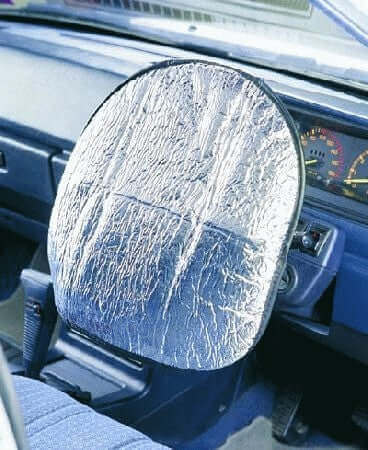With Australia being coined as the “most dangerous country in the world” and home to the deadliest collection of animals in the world, who would think that the native kangaroo could make it onto that list? We all think kangaroos are cute and they may not be venomous or lethal in themselves but when driving in rural and even urban Australia, the common hazard of hitting a kangaroo that’s jumped its way into your car is both terrifying and potentially fatal.
There are some common tips to avoid hitting kangaroos when driving.
1. The best thing to do is limit driving at dawn, dusk and at night in areas known to have kangaroos. This actually happens to be the cardinal rule. Because kangaroos are crepuscular, they are most active at dusk and dawn which is when a majority of kangaroo hits happen.
2. Slow down. Driving below the speed limit will give you extra time to see an animal, as well as extra braking time so you can avoid hitting it. It also gives the ‘roo a chance to react and bound away from the imminent danger of your car.
3. If the case is that the kangaroo jumps out right in front of you, brake heavily and try not to swerve.The first step is to slow down as safely as possible by braking in a straight line. If it’s safe to do so, try to gently swerve but only once you’ve slowed down; you’re better off hitting a kangaroo than ending up in an accident caused by swerving, which can result in the injury of the driver or passengers.
4. Install a kangaroo whistle. The Animal Repeller Sonic Whistle Shoo Roo is a Motoquipe's best selling product and is priced under $10, making it a small investment to minimise your chances of hitting a kangaroo. The whistle is designed to emit a high frequency noise so that the kangaroos are not startled by your approach, panic and move into your path. The repellers work at speeds over 50 kph and the high frequency sound warns animals away from the vehicles. In ideal conditions the sound can be heard by them from up to two kilometres away. When installing your whistles, make sure you haven’t put them on backwards and note that the repellers will need to be checked regularly to ensure that they aren’t blocked. Drive safely and always be prepared to take action if a ‘roo chances out in front of your car.

If the basic stick on ones aren’t doing it for you, then you can go for the stick on GWS which are the original, made in the USA. This device alerts kangaroos, dogs and wildlife to the approach of your vehicle when you’re driving at speeds over 55 kph. The GWS radiates sound waves to warn animals of your on-coming vehicle and can be cleaned to ensure continued unobstructed air flow. It’s larger than the basic black whistle and comes with a key to open up for easy cleaning.
And then we have the Shu Roo Slim Line Mk4 Hi Frequency Vehicle Protection. The electronice device, ShuRoo, has been helping protect motorists from wildlife hits since 1986. The unique signal emitted by ShuRoo cannot be heard by humans, but to wildlife it’s as loud as a police siren. By taking advantage of their high frequency danger alert system in this way, ShuRoo warns animals of your approach and helps prevent a collision that could potentially harm you, your passengers and your vehicle. ShuRoo creates a high frequency “Safety Sound Zone” 400 metres ahead and 50 metres either side of your vehicle which alerts kangaroos and other wildlife of your approach. It works day and night, rain or shine. The company is owned and operated by the founder's family in Brisbane, making this a true blue Aussie product.
What people should keep in mind is that kangaroos are susceptible to ear mites which will leave them deaf so chances are, those kangaroos won’t be able to hear the high frequencies, let alone your car. Always be aware of the danger of hitting wildlife when driving on rural roads and be prepared for the worst. Don’t head out for a long country drive before you think about what you would do if one came bounding into you.
As Claire Wilson from CamperTrailer Australia said, “Nobody wants to hit an animal, it is generally a lose-lose situation for all involved. But, if you do, get out of the car and check that it isn't a female with a young one in the pouch. If it is, where possible take the baby to the nearest wildlife rescue centre still in the mother's pouch or for larger animals wrap the baby in a blanket.”





